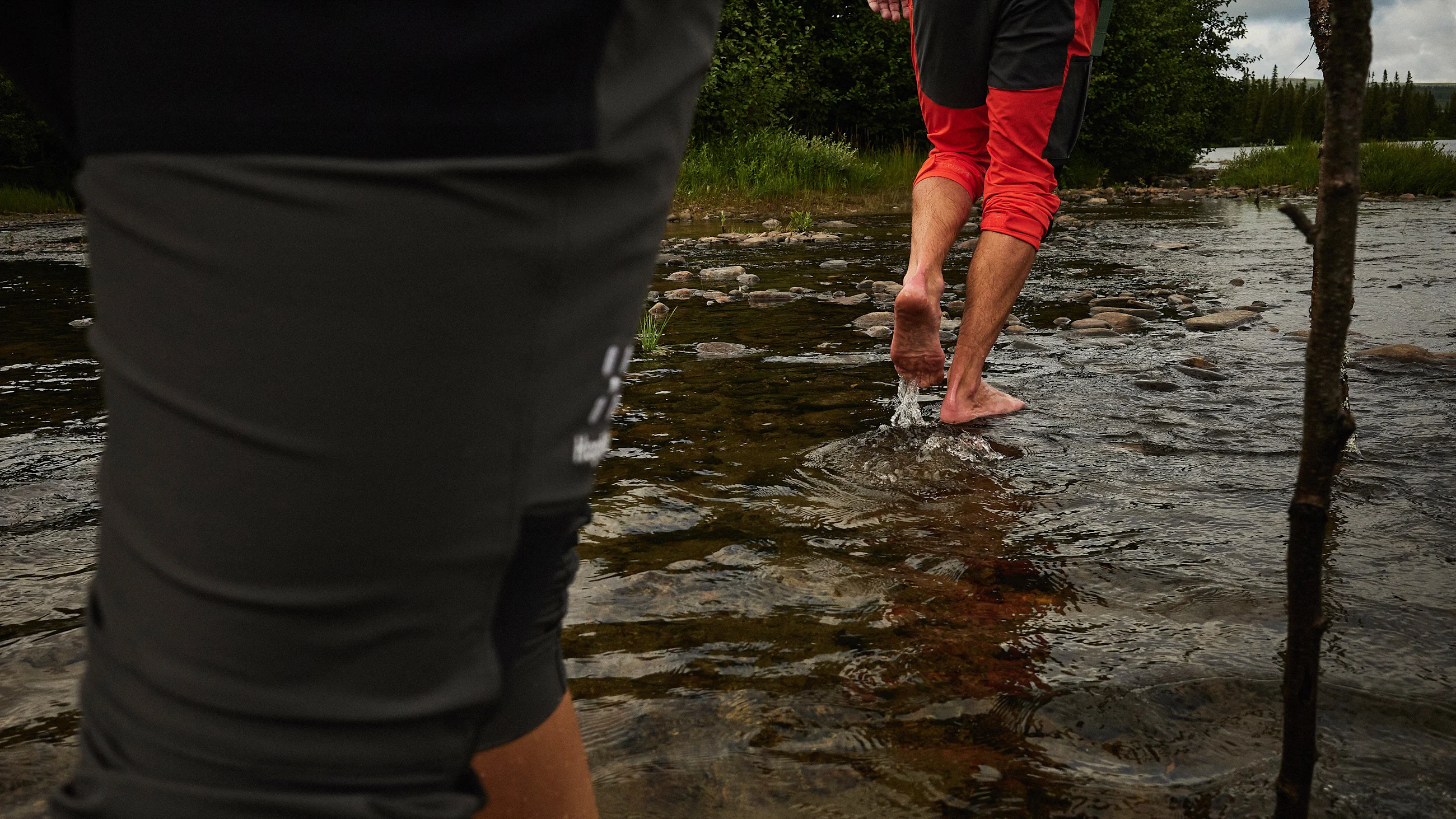
April 2022
Recycled and renewable.
Producing performance products is a complex task. And doing it in a way that minimizes climate impact is even more challenging. Today, the largest part of a product’s environmental footprint comes from the production of materials.
As part of Haglöfs’ wider climate commitment to halve its emissions and reach net zero by 2030, the company has set the target to use recycled or renewable materials in 100 percent of its main fabrics by 2025.
“It might seem easy to reduce a product’s environmental footprint by simply switching to low-impact materials, but that’s really not the case,” says Isabelle Österdahl, Product Manager at Haglöfs. “There are several aspects we must take into consideration as we work towards our 2025 target, such as the availability, cost, and quality of recycled and renewable materials.”
Using recycled and renewable fabrics in the hiking pants range
In previous seasons, the company switched all of the main materials in its daypack collection to recycled fabrics. Now, Haglöfs is targeting its hiking pants range. In the 2022 spring and summer collection, all regular hiking pants contain recycled or renewable fabrics.
“Legwear is Haglöfs’ second largest product category, so the fact that we’ve switched out the fabrics we use for our hiking pants has great impact,” says Isabelle. “But there are also challenges, since recycled and renewable fabrics are in high demand and more expensive.”
To meet these challenges, Haglöfs works strategically with product development and targets the full product category rather than individual styles. This, in combination with consolidating the entire legwear material library, allows Haglöfs to work with its suppliers to control cost levels.
Haglöfs also places a strong focus on pattern making to minimize waste.
“We have redesigned the patterns and planned the cutlines of our hiking pants to use as much fabric as possible,” says Isabelle. “It is very important for us at Haglöfs that we don’t waste what we have or buy more material than we need.”
Maintaining performance while decreasing footprint
When setting out to produce a piece of clothing using low-impact materials, it can be difficult to find the exact quality and functionality needed. For Haglöfs’ product team, discovering new ways to ensure products are made from recycled or renewable materials with sustained durability and responsible performance is an inspiring challenge.
“When making efforts to reduce our climate impact, we always look at the bigger picture,” says Isabelle. “We bring in more renewable fabrics, like organic cotton or hemp for our pants, but only when it makes sense in terms of the use it’s designed for. If a material rips easily during an activity, it’s just not helpful to use it.”
Meanwhile, in order to make their hiking pants easier to recycle, Haglöfs avoids using synthetic and renewable material blends. The company has even looked at the trims of their pants and taken other small but impactful details into account, such as replacing synthetic zippers with natural buttons and using natural fabrics for clothing tags.
Following these changes across the hiking pants range, more than half of Haglöfs’ spring and summer collection now contains fabrics with recycled or renewable content. This ensures the company is well on track to meet its 2025 target.
Working with the whole production process
While using recycled or renewable materials is a great step in the right direction, this action alone will not be enough to meet Haglöfs’ climate commitment. That is why materials are only one part of a wider strategy to reduce the carbon footprint of Haglöfs’ production process, which also includes factories and operations.
The company aims to improve the energy efficiency of factories, use low-impact production techniques, as well as phase out coal and increase the usage of renewable energy in its supply chain.
“Many of our initiatives target our supply chain, something we share with our competitors,” says Isabelle. “Therefore, we’re working side by side with them to make change happen across the industry. This will enable all of us to reduce emissions and reach our net zero goals.”